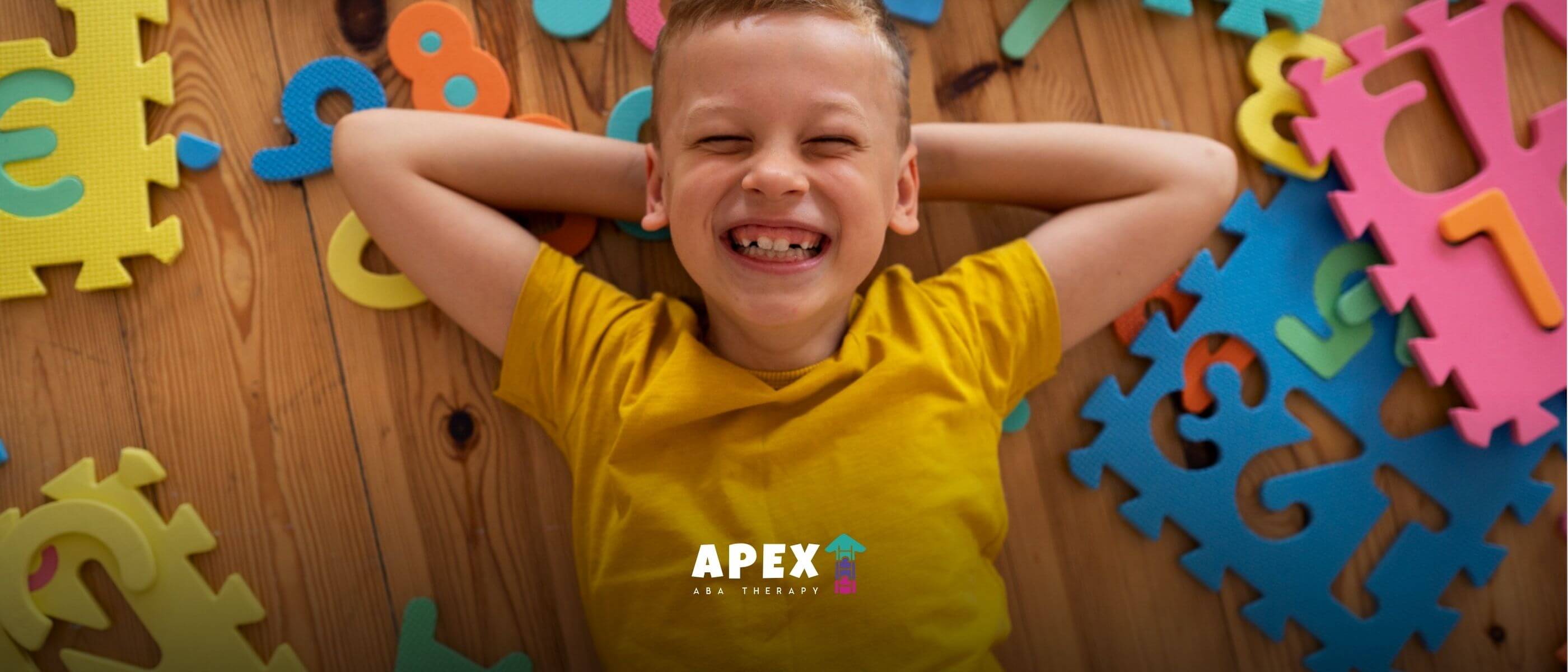Key Methods for Autism Meltdown Prevention
Unlock serenity with autism meltdown prevention methods. Discover strategies, sensory sensitivities, and support techniques for a calmer life.

Key Methods for Autism Meltdown Prevention
Understanding Autism Meltdowns

Autism meltdowns are intense and often uncontrollable reactions exhibited by individuals with autism. These meltdowns can involve emotional outbursts, sensory overload, and difficulty in self-regulation. It's important to note that meltdowns are not deliberate or manipulative behaviors, but rather a response to overwhelming circumstances. They can vary in duration and severity [1].
Definition and Characteristics
Autism meltdowns are involuntary responses to a nervous system overload, often triggered by a perceived threat to life. During a meltdown, individuals with autism may experience heightened emotions, including anger, frustration, anxiety, or sadness. They may also exhibit physical behaviors such as crying, shouting, self-harming, or withdrawing from their surroundings. It's crucial to understand that meltdowns are not tantrums or intentional acts of defiance, but rather an overwhelming response to internal or external stressors.
Triggers and Causes
Common triggers for autism meltdowns can vary from person to person, but there are some recurring factors to consider. These triggers include sensory overload, changes in routine, communication difficulties, and transitions. Sensory overload occurs when an intense sensory stimulus overwhelms an individual's ability to cope. This can result from a single unexpected event, such as a loud noise, or build up over time due to the effort required to manage sensory sensitivities in daily life [3].
Understanding and identifying these triggers is crucial for preventing or minimizing meltdowns effectively. By recognizing the specific circumstances or situations that lead to meltdowns, individuals with autism and their caregivers can work towards creating strategies to address and manage these triggers. This may involve making adjustments to the environment, implementing routines and structure, and providing appropriate supports to help regulate emotions and sensory sensitivities [4].
By gaining a deeper understanding of autism meltdowns and their triggers, individuals with autism, their families, and caregivers can develop effective strategies for prevention and support. It is important to approach meltdowns with empathy, recognizing that they are involuntary responses to overwhelming circumstances, and to provide the necessary support and interventions to ensure the well-being of individuals with autism.
Importance of Preventing Meltdowns

Preventing meltdowns is of utmost importance when it comes to supporting individuals on the autism spectrum. Meltdowns can be overwhelming, distressing, and disruptive to daily routines, hindering social interactions and impeding learning opportunities [1]. By implementing effective prevention strategies, the impact on individuals and their daily lives can be minimized.
Impact on Individuals
Autism meltdowns can have profound effects on individuals. The overwhelming emotions experienced during a meltdown can lead to feelings of frustration, anger, and anxiety. These intense emotions make it challenging for individuals to express their wants and needs effectively, potentially exacerbating the meltdown. Additionally, meltdowns can create uncomfortable or even dangerous situations if the stressor continues and proper recovery time isn't possible.
Preventing meltdowns can significantly improve the emotional well-being of individuals on the autism spectrum. By reducing the frequency and severity of meltdowns, individuals can experience a greater sense of calm and stability, leading to improved overall quality of life. Additionally, preventing meltdowns allows individuals to focus their energy on positive experiences and interactions, fostering personal growth and development.
Disruption to Daily Life
Meltdowns can disrupt daily life for individuals with autism and those around them. These episodes can occur at particular times, in specific places, or in response to particular events, making it difficult to plan and anticipate potential triggers [6]. For individuals and their families, the unpredictability of meltdowns can create stress and anxiety, impacting their ability to engage in social activities, attend school or work, and maintain regular routines.
Preventing meltdowns helps establish a more stable and predictable environment. By identifying the causes and triggers of meltdowns, individuals and their support network can work together to minimize the occurrence of these disruptive episodes. Consistent routines, sensory-friendly environments, and effective communication strategies can all contribute to reducing the potential for meltdowns and promoting a more harmonious daily life.
Recognizing the importance of preventing meltdowns, it is essential to explore strategies and interventions that can help individuals on the autism spectrum manage their emotions and navigate their daily experiences more effectively. By focusing on prevention, individuals can experience greater stability, emotional well-being, and overall satisfaction in their lives.
Strategies for Meltdown Prevention

When it comes to preventing autism meltdowns, implementing effective strategies is crucial in creating a supportive and meltdown-free environment for individuals on the autism spectrum. Two key strategies that have proven to be beneficial are establishing predictable routines and providing calm and safe spaces.
Establishing Predictable Routines
Establishing consistent routines is paramount for individuals with autism. Routines provide stability, reduce anxiety, and help individuals anticipate what comes next, thereby reducing the likelihood of meltdowns [1]. By following a predictable schedule, individuals with autism gain a sense of control and familiarity, which can alleviate stress and anxiety.
To create an effective routine, it is important to establish a structured daily schedule that includes specific times for activities such as mealtimes, school or work, leisure activities, and rest. Visual supports such as visual schedules or calendars can be helpful for individuals with autism to understand and follow the routine. Additionally, providing advance notice of any changes in the routine can help individuals prepare for transitions and minimize anxiety.
Providing Calm and Safe Spaces
Creating calm and safe spaces is another essential strategy for preventing meltdowns in individuals with autism. These spaces provide individuals with a designated area where they can retreat to when feeling overwhelmed or overstimulated [1]. These spaces should be quiet, comfortable, and free from excessive sensory stimulation.
To create a calming space, consider the individual's sensory needs. Some individuals may benefit from soft lighting, while others may prefer dimmed or natural lighting. It is important to reduce noise levels and provide comfortable seating or cushions. Additionally, sensory tools such as weighted blankets, fidget toys, or noise-canceling headphones can help individuals regulate their sensory experiences and promote relaxation.
Incorporating effective communication strategies and positive reinforcement techniques within these calm spaces can further support individuals with autism. Clear and concise communication, along with the use of visual supports, can facilitate understanding and reduce anxiety. Positive reinforcement, such as praise or rewards for desired behaviors, can motivate individuals and encourage positive behavior.
By implementing strategies such as establishing predictable routines and providing calm and safe spaces, individuals with autism can experience reduced anxiety, increased stability, and improved emotional regulation. These strategies, along with identifying and managing triggers and providing sensory support, contribute to a supportive environment that aims to prevent meltdowns and promote positive behavior. For more information on autism-related topics, feel free to explore our articles on autism and ADHD overlap, autism therapy success stories, and autism social interaction tips.
Sensory Sensitivities in Autism
Autism spectrum disorder (ASD) is often accompanied by sensory sensitivities, which can significantly impact individuals' daily lives. Sensory sensitivities in autism can manifest in two ways: hypersensitivity (over-responsiveness) and hyposensitivity (under-responsiveness) to various stimuli. It's important to note that many individuals with autism experience a combination of both hypersensitivity and hyposensitivity [3].
Hypersensitivity and Hyposensitivity
Hypersensitivity refers to an increased sensitivity to sensory stimuli. This can include being overwhelmed by certain sounds, lights, textures, smells, or tastes. For example, a seemingly harmless noise like a vacuum cleaner or a bright fluorescent light can be distressing for someone with hypersensitivity. On the other hand, hyposensitivity refers to a decreased sensitivity to sensory stimuli. People with hyposensitivity may have a higher threshold for sensory input and may seek out intense sensory experiences to regulate their sensory systems [3].
The specific sensitivities can vary from person to person. Some individuals may have hypersensitivity to certain sounds, while others may be hypersensitive to specific textures or smells. Similarly, some individuals may experience hyposensitivity in one sensory area, while others may experience it in another. It's crucial to understand and address these sensitivities to provide appropriate support and accommodations for individuals with autism.
Impact on Meltdowns
Sensory sensitivities play a significant role in autism meltdowns. Sensory overload can occur when intense sensory stimuli overwhelm an individual's ability to cope. This overload can be triggered by a single event, such as a loud noise, or it can accumulate over time due to the effort required to manage sensory sensitivities in everyday life. When the sensory system becomes overwhelmed, it can lead to a state of dysregulation and distress, often resulting in a meltdown.
Meltdowns are intense reactions to overwhelming situations and can manifest as crying, screaming, aggression, or withdrawal. They are a result of the impaired nervous system's response to dysregulated sensory inputs, which may be perceived as a threat to survival by individuals with autism [2]. Understanding and accommodating sensory issues is crucial in managing and preventing meltdowns, as it can help ease discomfort and create opportunities for individuals with autism to learn, socialize, communicate, and participate in their communities.
By recognizing the sensory sensitivities and their impact on meltdowns, individuals with autism and those supporting them can implement strategies and interventions to create sensory-friendly environments, establish routines, and provide the necessary support to prevent and manage meltdowns effectively. For more information on intervention and support techniques, refer to our article section on Responding to Meltdowns.
Recognizing Meltdown Signs
When it comes to preventing autism meltdowns, recognizing the signs early on is crucial. Many autistic individuals exhibit specific indicators and physical cues that signal the onset of a meltdown. By paying attention to these early warning signs, interventions can be implemented to prevent the escalation of distress.
Early Indicators
Before a full-blown meltdown occurs, many autistic individuals display signs of distress during what is commonly referred to as the "rumble stage." This stage is characterized by anxiety-related behaviors, such as pacing, repetitive questioning, rocking, or becoming very still. These behaviors serve as early indicators that something is amiss and that the individual is experiencing heightened stress levels.
Recognizing these early indicators is crucial in preventing meltdowns. By identifying the rumble stage, caregivers and support systems can intervene early and implement strategies to help the individual regain a sense of calm and avoid a full meltdown.
Physical and Emotional Cues
In addition to early indicators, autistic individuals often exhibit physical and emotional cues that can serve as further signs of an impending meltdown. These cues may include increased agitation, distress, difficulty communicating, and challenges in regulating emotions.
Physically, individuals on the autism spectrum may experience sensations such as tension, difficulty breathing, heat, or blurry vision as they approach a meltdown. These physical cues can be important clues for caregivers and support systems to identify and address the individual's escalating distress.
By being attuned to these behavioral, emotional, and physical cues, those supporting autistic individuals can intervene early and implement appropriate strategies to de-escalate the situation and prevent meltdowns from occurring.
Understanding and recognizing the early indicators and physical and emotional cues associated with meltdowns is vital for effective intervention. By responding promptly and implementing appropriate support strategies, caregivers and support systems can help individuals with autism navigate challenging situations, manage their stress levels, and maintain a sense of well-being. For more information on intervention and support techniques, refer to the section on responding to meltdowns and building emotional regulation.
Intervention and Support Techniques
When it comes to autism meltdowns prevention, intervention and support techniques play a crucial role in managing and minimizing the frequency and intensity of meltdowns. Two key strategies for addressing meltdowns are responding to meltdowns effectively and building emotional regulation skills.
Responding to Meltdowns
When an individual with autism experiences a meltdown, it is important to respond in a calm and supportive manner. Here are some strategies to consider:
- Meet the individual at their energy level: It can be helpful to match the energy level of the person experiencing the meltdown, providing a sense of understanding and support.
- Provide reassurance through self-regulation and calming tools: Offering tools such as deep breathing exercises, sensory toys, or a quiet space can help the individual regain a sense of calm.
- Show love and engage in a supportive situation: Expressing love, empathy, and understanding can help create a safe environment and promote a sense of security for the individual.
- Discuss the meltdown once they have calmed down: After the meltdown has subsided, it can be beneficial to have a conversation with the individual about what happened. This helps with emotional regulation and personal understanding, and can aid in preventing future meltdowns.
By responding in a supportive and understanding manner, caregivers and individuals can work together to de-escalate the situation, promote emotional well-being, and help the individual regain control.
Building Emotional Regulation
Building emotional regulation skills is essential for individuals with autism to manage their emotions and prevent meltdowns. Here are some techniques that can be helpful:
- Teach self-calming strategies: Encouraging the use of self-calming techniques, such as deep breathing, counting to ten, or engaging in a preferred activity, can empower individuals to regulate their emotions.
- Use visual supports: Visual supports, such as visual schedules or emotion charts, can aid in understanding and expressing emotions, and provide a tool for self-regulation.
- Practice social stories or role-playing: Social stories or role-playing scenarios can help individuals with autism understand and navigate different emotions and social situations, promoting emotional regulation.
- Seek therapy or counseling: Therapy, such as cognitive-behavioral therapy (CBT) or applied behavior analysis (ABA), can provide individuals with autism with valuable tools and strategies for emotional regulation.
By focusing on building emotional regulation skills, individuals with autism can develop coping mechanisms to manage their emotions effectively, reducing the likelihood of meltdowns.
Intervention and support techniques for autism meltdowns prevention encompass a range of strategies, including responding to meltdowns in a supportive manner and fostering emotional regulation skills. It is important to remember that each individual with autism is unique, so it may be necessary to explore various techniques and approaches to find what works best for them. Seeking guidance from professionals, such as therapists or counselors, can also be beneficial in developing personalized strategies.
References
- https://www.adinaaba.com/post/autism-meltdowns-prevention
- https://autism.org/meltdowns-calming-techniques-in-autism/
- https://www.autismspeaks.org/sensory-issues
- https://www.autism.org.uk/advice-and-guidance/topics/behaviour/meltdowns/all-audiences
- https://www.goldstarrehab.com/parent-resources/autism-meltdowns-prevention
Frequently Asked Questions

How to Teach Kitchen Safety to Autistic Children: A Parent’s Guide
Teaching kitchen safety to autistic children is easier with the right strategies. Learn step-by-step tips to create a safe environment and build essential skills.

How to Manage Attention-Seeking Behaviors in a Positive, Supportive Wayr
Learn how to reduce attention-seeking behaviors in children using positive reinforcement, clear boundaries, and communication skills. Find helpful strategies here.

Can Play Therapy and ABA Therapy Work Together to Help Your Child?
Combining play therapy with ABA therapy offers a powerful way to enhance your child’s growth. Find out how these therapies work together for lasting benefits.



